Landholders blocking Transgrid’s HumeLink energy superhighway receive ultimatum as forced acquisitions loom
As Transgrid forges ahead with its giant renewables project, across southern NSW the wealthy and connected, quiet generational farmers and young mums and dads are receiving acqusition notices, a process they say is like ‘waiting for an axe to fall’.
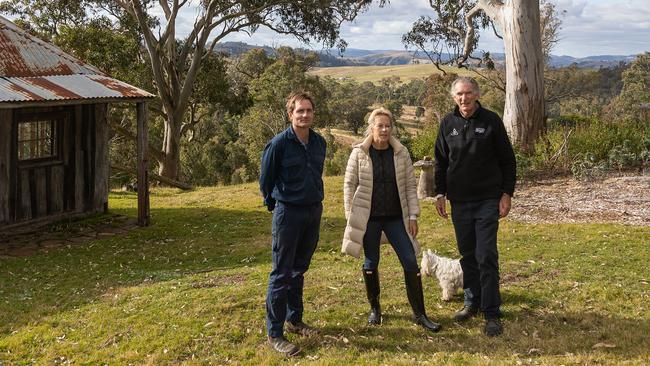
When investment banker Keith Kerridge bought the ramshackle Hillasmount property in the NSW southern tablelands in 1989, he imagined returning the heritage-listed homestead to its glory days of the late-1800s.
“It’s such an unusual place, a significant place in the history of this area,’’ he says, walking along the sun-filled front veranda positioned to enjoy glorious views to a forested ridge. He points out the lath and plaster construction, the all-original exterior including the roof that’s rusted and sagging in spots but doesn’t leak.
Outside, he has restored the blacksmith’s and tinker’s huts and other tumbledown buildings. Inside, a roaring fire warms the original stone kitchen and throughout the home, period furnishings reflect a step-back-in-time quality, just as he wanted.
Built in 1879, this is one of precious few rural pioneering homesteads that remain in their original state, Kerridge says. The collection of historic buildings and the large garden draws a lot of interest; the last open day attracted about 100 visitors. “It is an excellent and rare example of vernacular Australian rural architecture,’’ he says.
The property’s isolated position at the end of a dirt road just north of Bannaby harks to earlier times and it’s this setting that has pitched Kerridge, a cattle breeder and significant local landholder, into battle with Transgrid, the giant electricity transmission operator tasked with building an energy superhighway to deliver the renewables required for the country’s clean, green transition.
Kerridge is one of the hold-outs, one of more than 100 impacted property owners along the planned 360km HumeLink route through southern NSW who have refused to strike a land access deal with Transgrid. It’s a fight that’s united the wealthy and connected, the quiet generational farmers, smaller landholders, professionals and young mums and dads.
Wagyu breeder Michael Katz, a former ING Bank chairman and Commonwealth Bank executive has been there from the start along with grazier Chrissy Hughes, wife of former attorney-general Tom Hughes, Malcolm Turnbull’s father-in-law.
Ironically, it was Turnbull’s vision for the much-delayed Snowy 2.0 that kickstarted the $4.57bn HumeLink project that will impact the Hughes holding, along with thousands of hectares of forest and keenly held farmland.
Now, it’s crunch time. Transgrid says it has secured signed or in-principle access agreements with 76 per cent (197) private landholders. The rest, including Katz, Hughes and Kerridge, will be coerced to co-operate: threats of compulsory acquisition are becoming reality.
Kerridge and his partner, Charlotte Smith, recently returned from overseas to receive a Proposed Acquisition Notice which starts a formal 90-day acquisition process under the Just Terms Act.
Up and down the line, 68 landholders have been opening their notices, some with a sick feeling that this is the end; others with a vow they will not give up until the bulldozers roll in. Transgrid says another 46 notices will be issued this month.
It’s an extraordinary situation, says Katz, who stands to have eight to 10 giant transmission towers on 70m-wide easements constructed on his Gurrundah property.
HumeLink is listed as a critical, state-significant project but he notes the PANs were issued before final government planning approval, or sign-off on final stage two costings from the Australian Energy Regulator. “It’s a perverse travesty of justice, in so many ways, to have these PANs signed off, without those final approvals, in favour of the shareholders of Transgrid who are foreign entities,’’ he says.
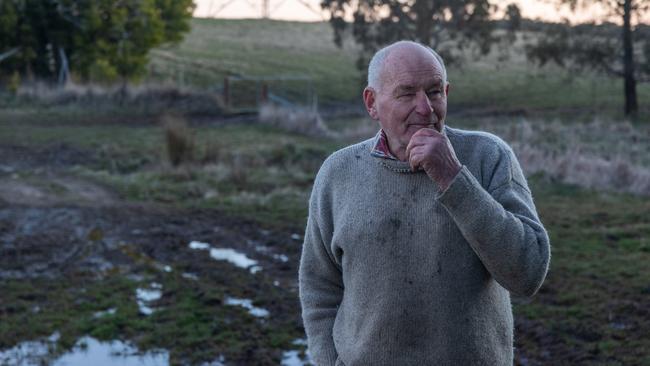
On Friday, the AER handed down its decision, knocking $314m off Transgrid’s stage two funding application but approving $3.965bn in capital expenditure.
In response, Transgrid said it was assessing the determination and was awaiting finalisation of environmental planning approvals and Clean Energy Finance Council financing arrangements before making a final investment decision.
The regulator made a point of emphasising the importance of Transgrid engaging with local communities. “While HumeLink is a complex project of national significance, we recognise that it affects landholders and local communities on the transmission route and impacts electricity bills,” AER chair Clare Savage said.
It’s all cold comfort for Katz, Hughes and other landholders who have long argued that the power lines should be built underground to mitigate environmental and farming impacts, bushfire risk and visual effects.
They commissioned an expert report that argued undergrounding HumeLink with HVDC lines would cost $7.3bn, well below Transgrid’s estimates, and they want the NSW government to run the numbers again, taking into account the environmental, social and agricultural costs associated with the project.
“I can’t understand why they won’t even look at the undergrounding option, when it’s so obviously the future,’’ says Chrissy Hughes, who estimates their property at Bannister will get about seven 500kV transmission towers across 3.5km of farming land, along with associated access roads.
“It’s going to make an awful mess of the place, quite honestly, and affect the local ecology too.’’
She says undergrounding would dissolve community opposition and grant Transgrid social licence. But the NSW government and Transgrid have remained steadfast that overhead is the best and cheapest option.
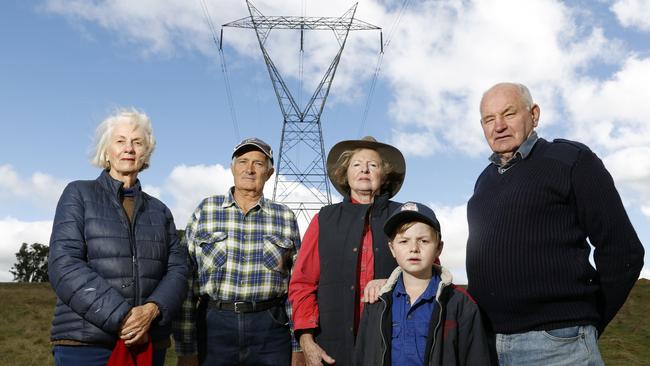
It’s a vital project, they argue, to bring more affordable and reliable renewable energy to the grid and keep the lights on as coal generation is retired. There can be no more delays. “Australia is attempting a world first: a large-scale grid dominated by wind and solar power built at breakneck speed,’’ Transgrid chief executive Brett Redman has said.
And so now Katz and the other landholders are looking anew at what towers, easements, access roads and overhead lines mean for their properties and surrounding landscape. “We’re stepping out the 70m (easements) and looking at the massive old eucalypts that will be destroyed. It goes smack bang through the middle of the place and takes out a lot of old-growth natural forests that we protected for years and years. This is just such a disaster,’’ Katz says.
Kerridge is also reassessing what HumeLink means for Hillasmount. When he embarked on preserving this gem from the past he didn’t imagine a future where 80m-tall steel transmission towers would slice along the forested ridge a little over 200m from the homestead.
“Siting transmission infrastructure so close to an item of significant cultural importance amounts to cultural vandalism,’’ he says. “Nobody could look at this and think it’s a good idea.’’
Environmental cost
Bill Johnson stands in a small patch of native forest, the only significant greenery between his 120ha sheep property at Bannister and a large wind farm and substation on a neighbouring property. Over the way, a solar farm sits in the folds of the land.
The altered landscape along his boundary means the vet-turned-farmer won’t be retiring to a house on the property, as planned, but this stretch of forest means a lot to him not just for its environmental values but because it was his late wife Alison who protected and nurtured it when they bought the old potato farm almost three decades ago.
They sought soil conservation assistance, fenced it off to exclude stock, controlled the weeds and feral animals. They watched the little forest grow as seedlings took hold and native grasses returned and they took note of the birds, gliders and bats that made use of it – proof, he thought, of the importance of remnant vegetation on agricultural land. Johnson reckons there are 167 mature trees here representing about seven species, including one that is a century old.
“We thought we were doing something right by the environment,’’ he shrugs.
Transgrid has told him the entire stand will have to go to make way for Humelink. Its ecologists have been through and marked-up the important hollow-bearing trees but it seems no amount of nesting hollows will save it; he’s been told that most of the trees will end up as firewood.
Johnson supports greater use of renewables and understands the need for upgraded transmission but questions the environmental cost that comes with the rollout of HumeLink’s overhead lines. It’s a massive and complex project comprising 835 transmission towers each with 24 conductors (wires) on 70m-wide easements with 683km of access tracks and a footprint of 8835ha through undulating rural valleys and hills, along rural fringes and the foothills of the Great Dividing Range.
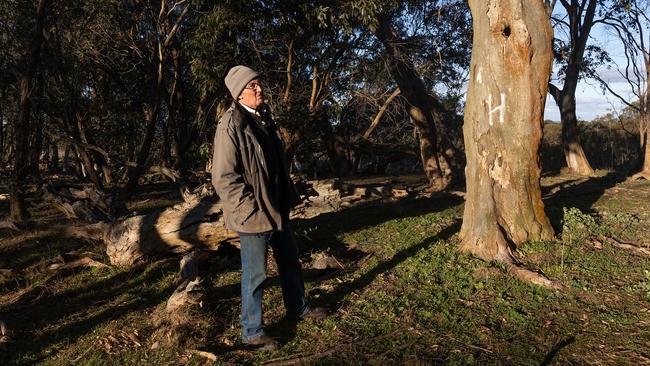
Up and down the route, Landcare groups and farmers have expressed concern at the loss of native plants and trees used for shade and windbreaks, habitat and soil conservation.
“This highly significant loss of local biodiversity, and bird and animal habitat, is dismissed by HumeLink as a small part of the hundreds of hectares being cleared to make way for this transmission line,’’ Johnson says.
“What I really want is for someone in power to stand in this forest and say ‘this is important, we should preserve it”.
A short drive away, poet, farmer and long-time local Landcare volunteer Russ Erwin stands in his native seed orchard – planted in conjunction with Greening Australia – and tries to work out what will be left after the bulldozers come through.
He’s spent four decades transforming this once relatively tree-less farm, and landholders around the district mention his efforts. “It’s not much but it has been the earnest work of one individual to accept the science and to do what can be done – often following guidelines propounded by government agencies,” Erwin notes.
He’s received a PAN and is trying to not sound defeated as he walks along his property in fading light to an orchestra of bird song.
“It’s like you know the axe is coming down, but you’re just waiting for the feel of it on the back of your neck,’’ he says.
‘Bullying tactic’
Building a new high-voltage transmission network traversing farms and forests between Wagga Wagga, Bannaby and Maragle was never going to be easy.
Run it through national parks and expect trouble; move it from one farmer’s land and it will affect their neighbour and ignite a local feud; site it through state forests and invite more criticism.
Timber industry body, the Softwoods Working Group, says the HumeLink route will result in the loss of about 400ha of prime timber plantations and more than 300ha of native forest in the Bago state forest. “This would represent a rather ironic situation where a renewable energy project can only be enabled by facilitating deforestation of native forest,’’ the group wrote in response to Transgrid’s environmental impact statement.
The Department of Planning and Environment’s Biodiversity, Conservation and Science Directorate also raised concerns about the potential for serious and irreversible impacts on some endangered sites and species. Transgrid has identified potential ramifications for 58 threatened flora species and 33 threatened fauna including 12 birds and 11 mammals.
Some 90 Aboriginal heritage sites have also been identified within the project footprint, and Transgrid is consulting with local traditional owners.
It insists it is doing all it can to avoid and minimise environmental harm and adds that biodiversity impacts will be offset.
Landholders point out this does nothing for their local environment, for the old-growth trees and remnant vegetation lost from their farms.
It’s been a long fight, and landholders issued with PANs are angered by this latest development.
“It is another bullying and bulldozing tactic, backed by government, to send out PANS to landholders, which is adding enormous stress to an already diabolical state,’’ says staunch opponent Rebecca Tobin, whose family farm is affected.
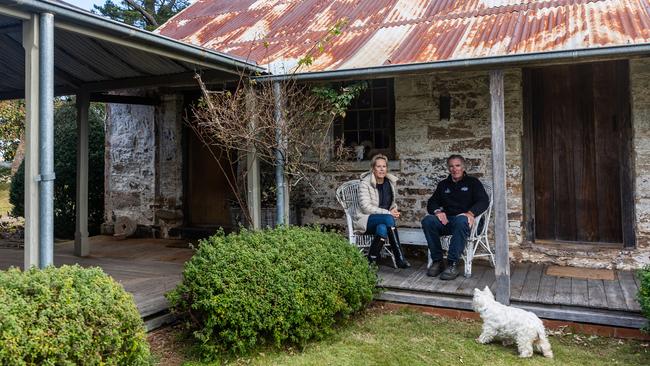
Transgrid says it makes every attempt to reach settlement with property owners through “fair, respectful and transparent negotiations.’’ In NSW private landowners hosting new high-voltage transmission lines have been offered a set rate of $200,000 per kilometre of transmission line, paid out in annual instalments over 20 years.
A spokesperson said compulsory acquisition was used only as a last resort and that once a PAN was issued, negotiations could be held during a 90-day period.
“Transgrid aims to negotiate an agreement with more than 90pc of landowners who receive a PAN, as was the case when acquiring land for EnergyConnect,’’ the spokesperson said.
“We acknowledge the sensitivities of communities and landowners, given the scale of the HumeLink project, and that’s why we have undertaken significant community, stakeholder and consumer representative engagement.’’
These statements only serve to anger landholders who say they have tried to engage.
At Hillasmount, Keith Kerridge says he’s had meetings, tried to understand why the new 500KV line couldn’t simply following an existing smaller Transgrid corridor that already runs along the southern edge of his property and clips the edge of Tarlo River National Park.
He argues that building a new line along the northern route will be longer and more expensive and will damage mature vegetation and the character of Hillasmount, which is subject to the Upper Lachlan Environmental Plan that aims to conserve heritage items, including their settings and views.
Chris Ainsworth, the president of the nearby Taralga Historical Society, also objects to the construction, which would disrupt the historically significant homestead and setting. “I’m upset that it brings an industrial look to a house that has been here so long and is so well preserved.’’
Over in Yass, sheep farmer Mary-Jane Betts says she’s had meetings and invited Transgrid engineers to come to the farm, which has been in her family for 90 years, to examine alternative routes that will save a fenced-off 175ha conservation zone and lessen impacts on farming practices.
“I have received funded monies for environmental projects over many years to secure a viable future for our waterways and wildlife corridors. A more environmentally and visually destructive location for the powerlines could not be imagined,’’ she says.
She hasn’t yet received a PAN, but the exhaustion and worry is clear in her voice.
In Bannister, Chrissy Hughes also has a notice. “We’ve got to either sign up or face the consequences by the 16th of September,’’ she sighs.
She’ll be asking for an extension as she takes advice and weighs up her options.
She tries to strike an optimistic tone: “It’s not too late. I believe it’s not too late.’’




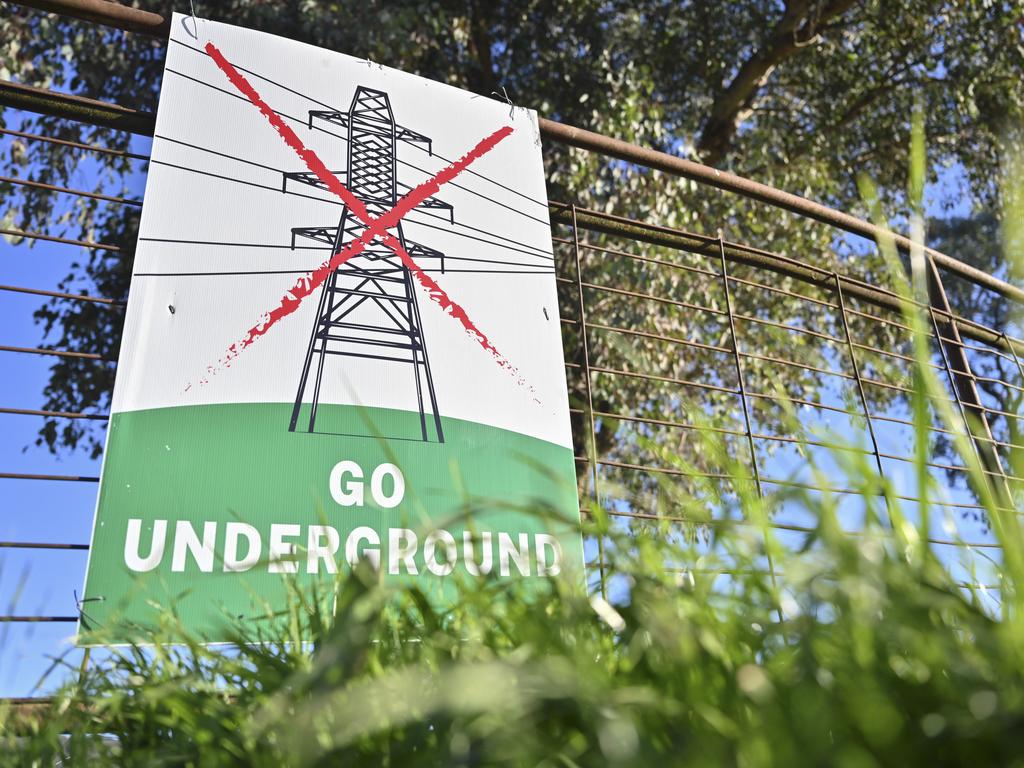


To join the conversation, please log in. Don't have an account? Register
Join the conversation, you are commenting as Logout